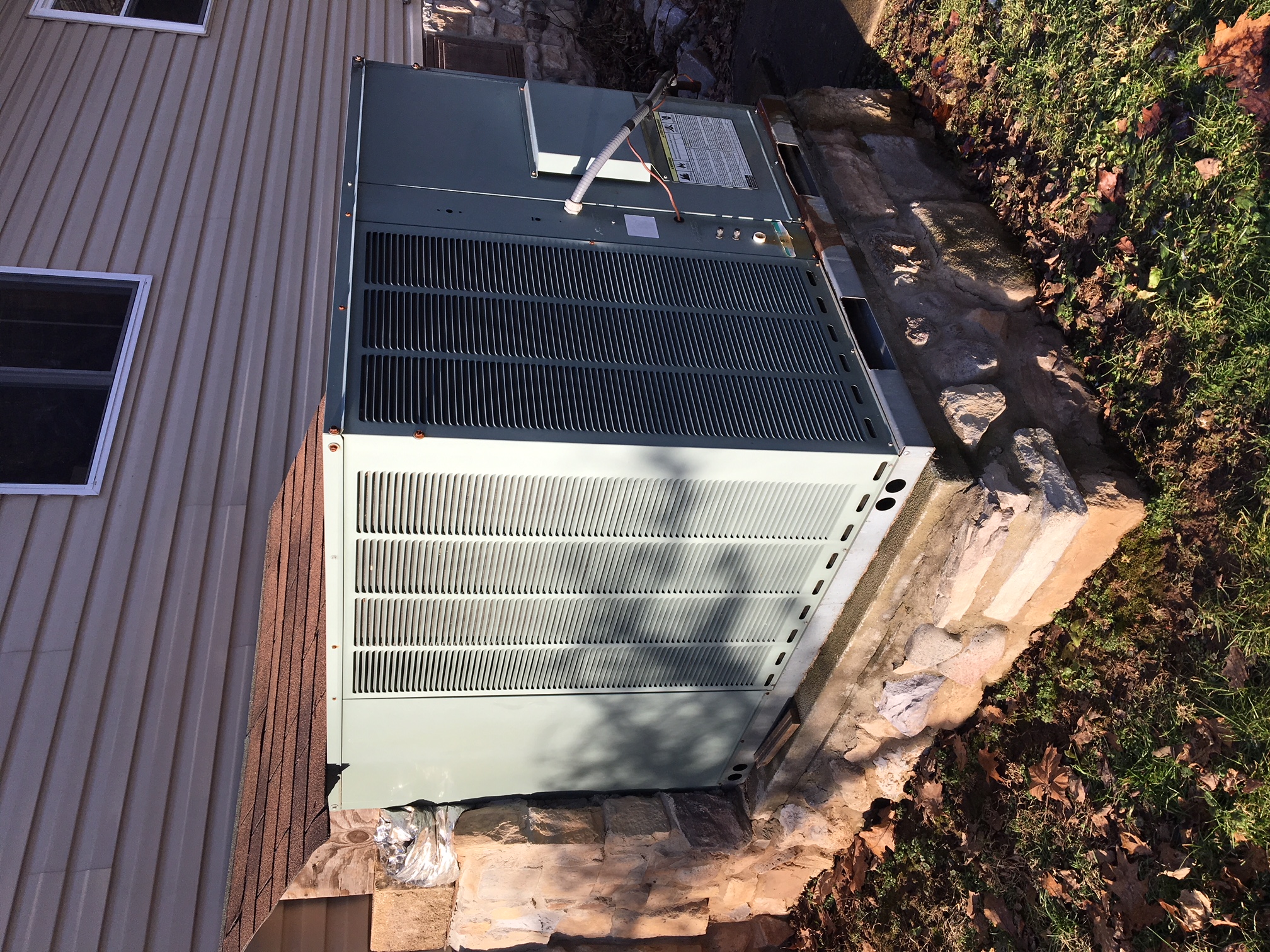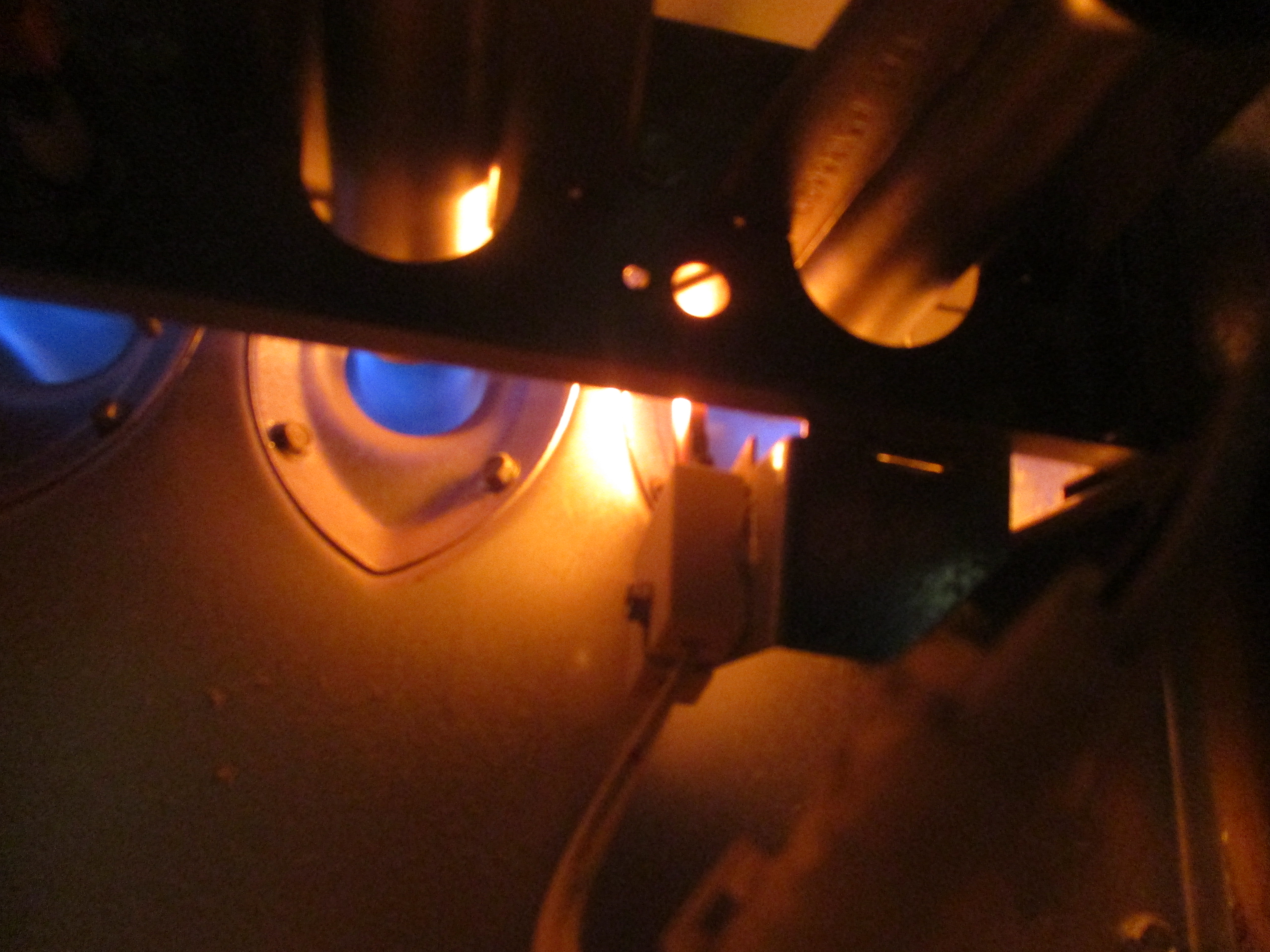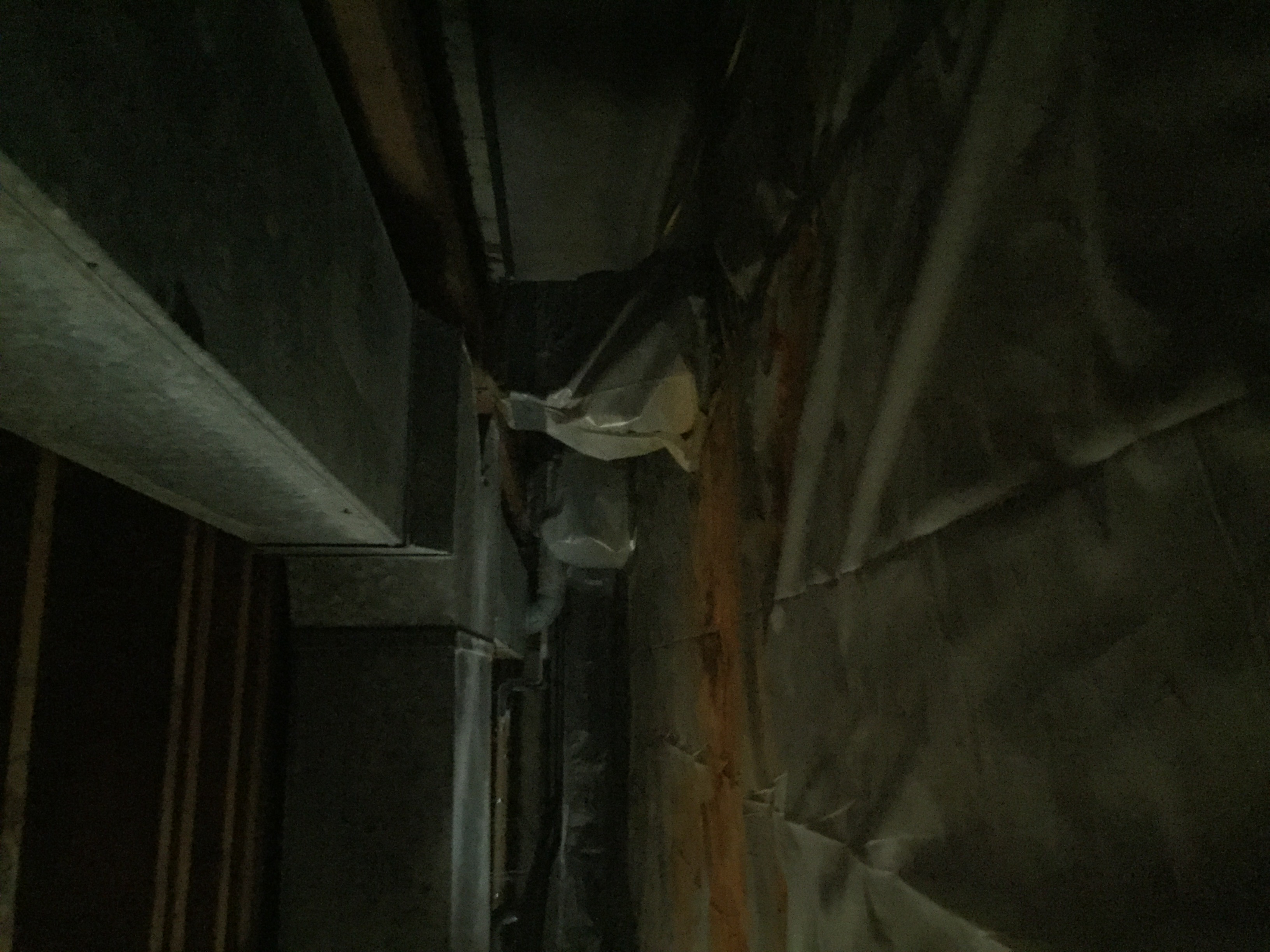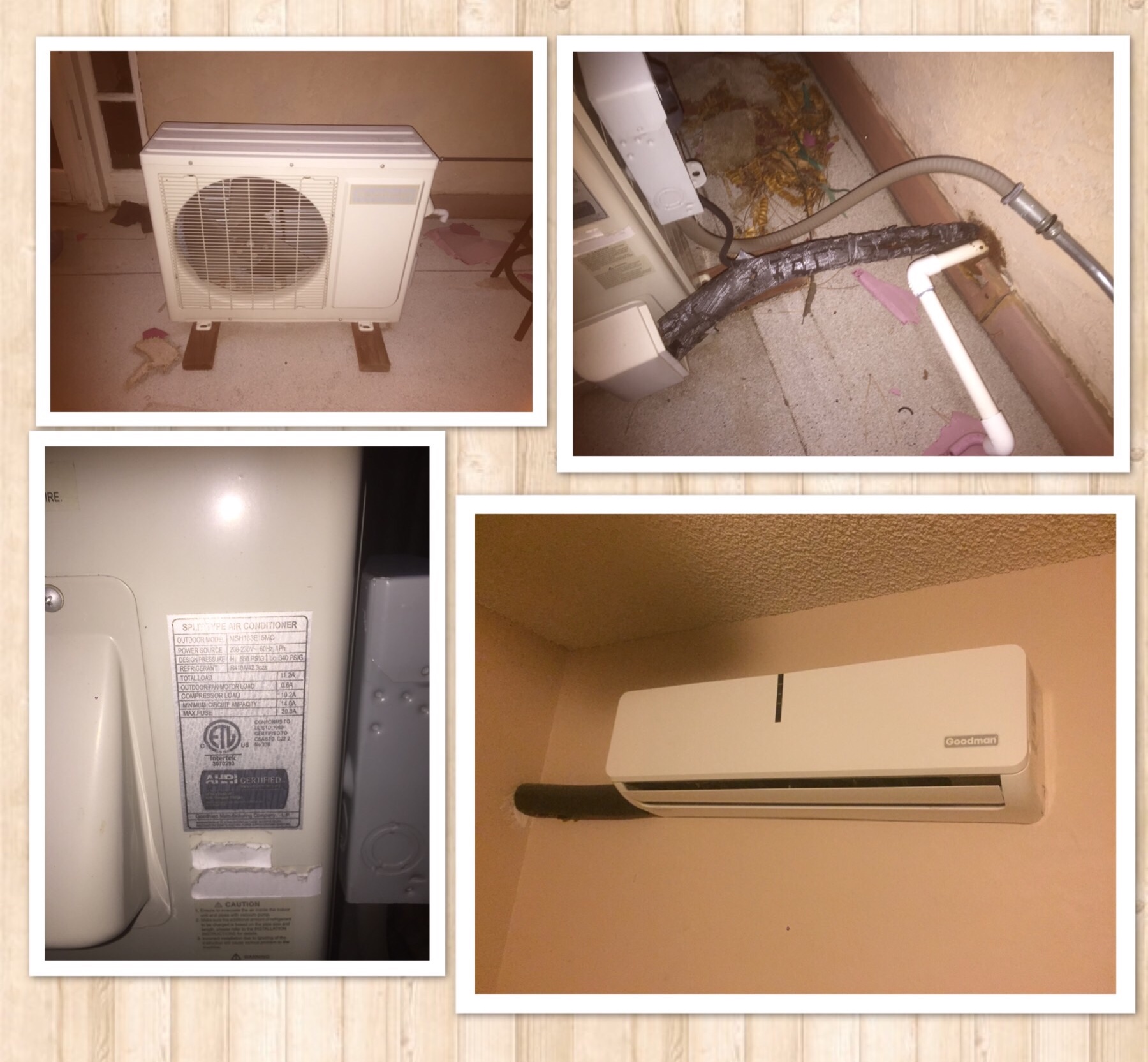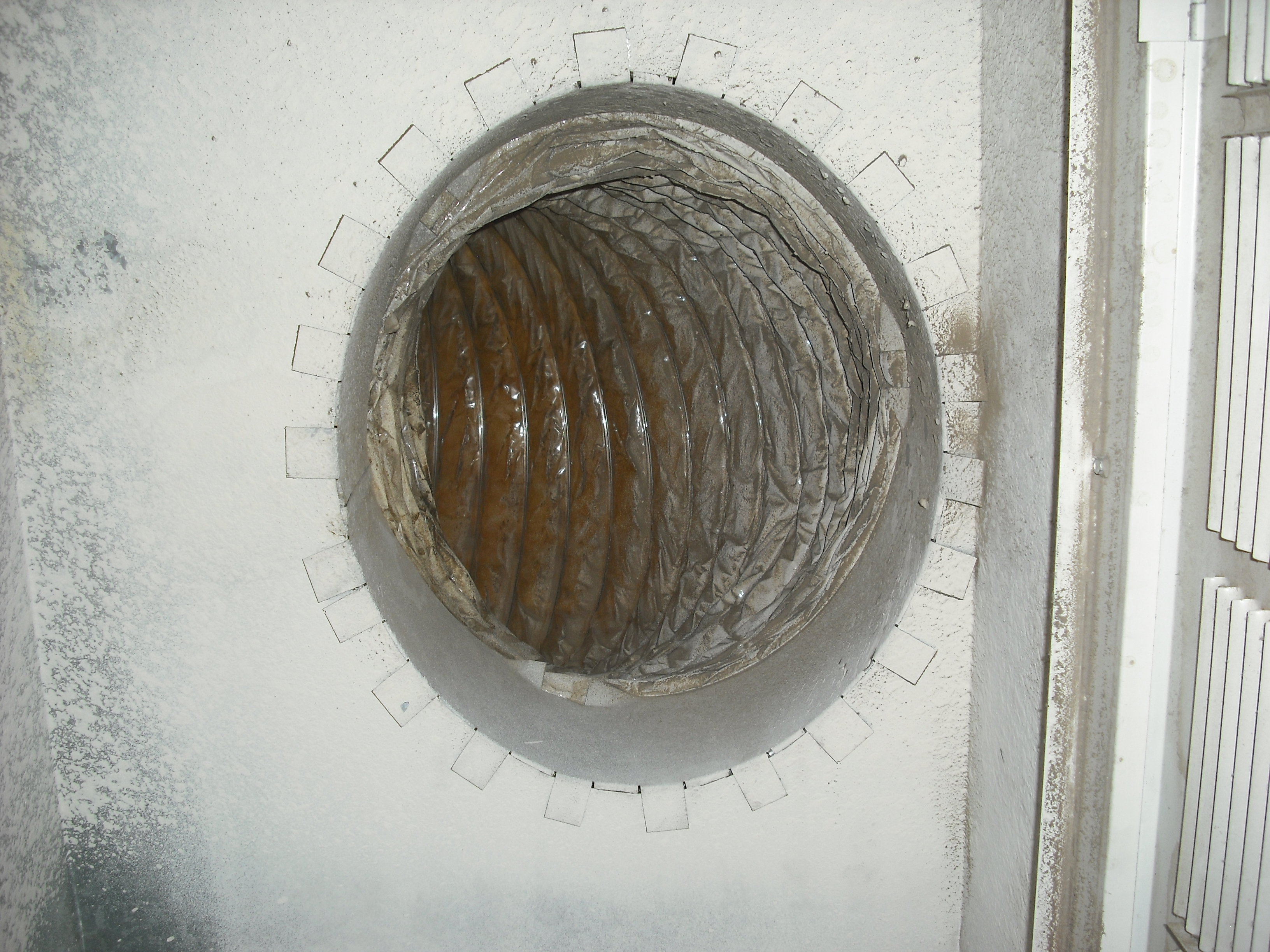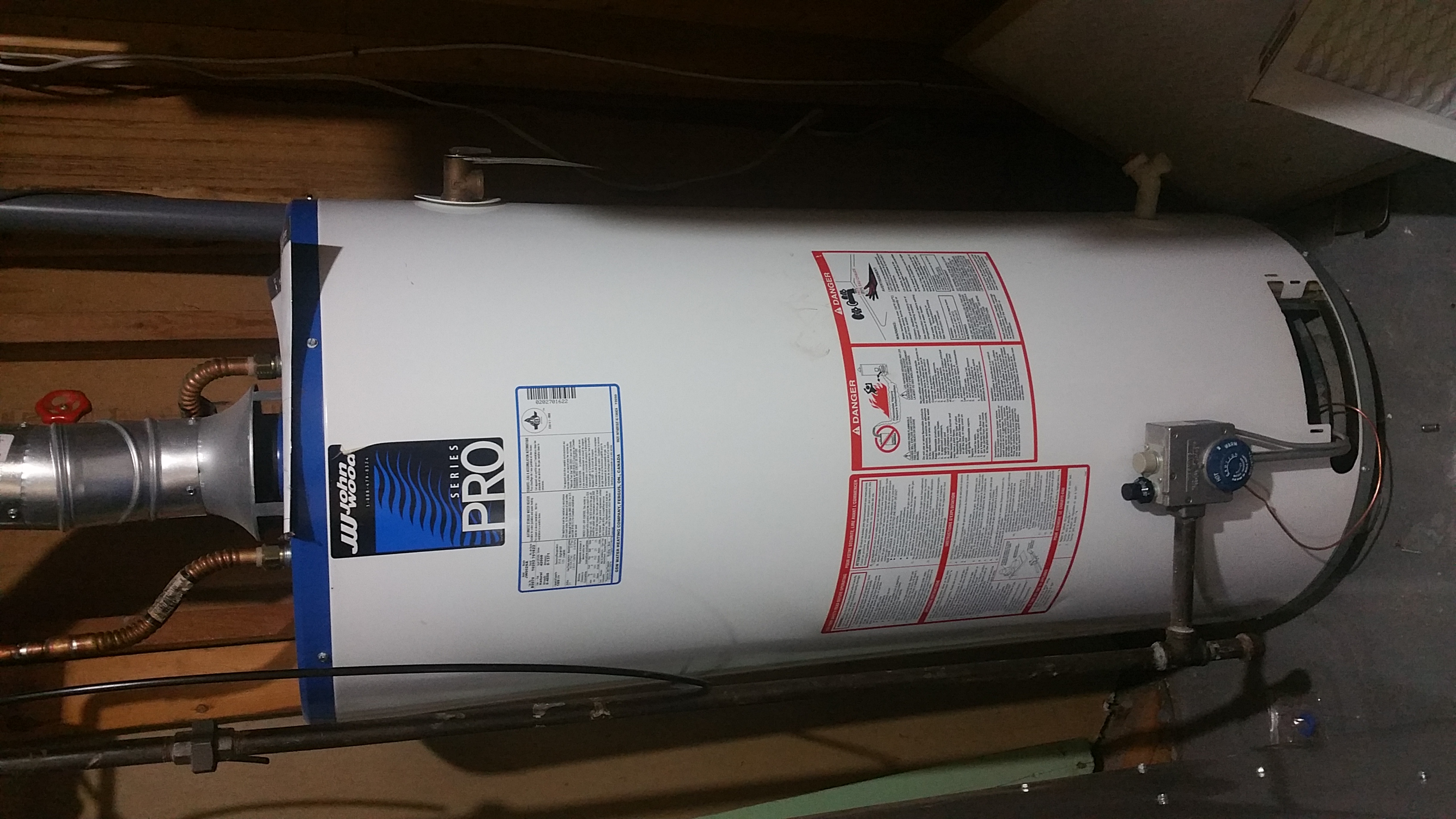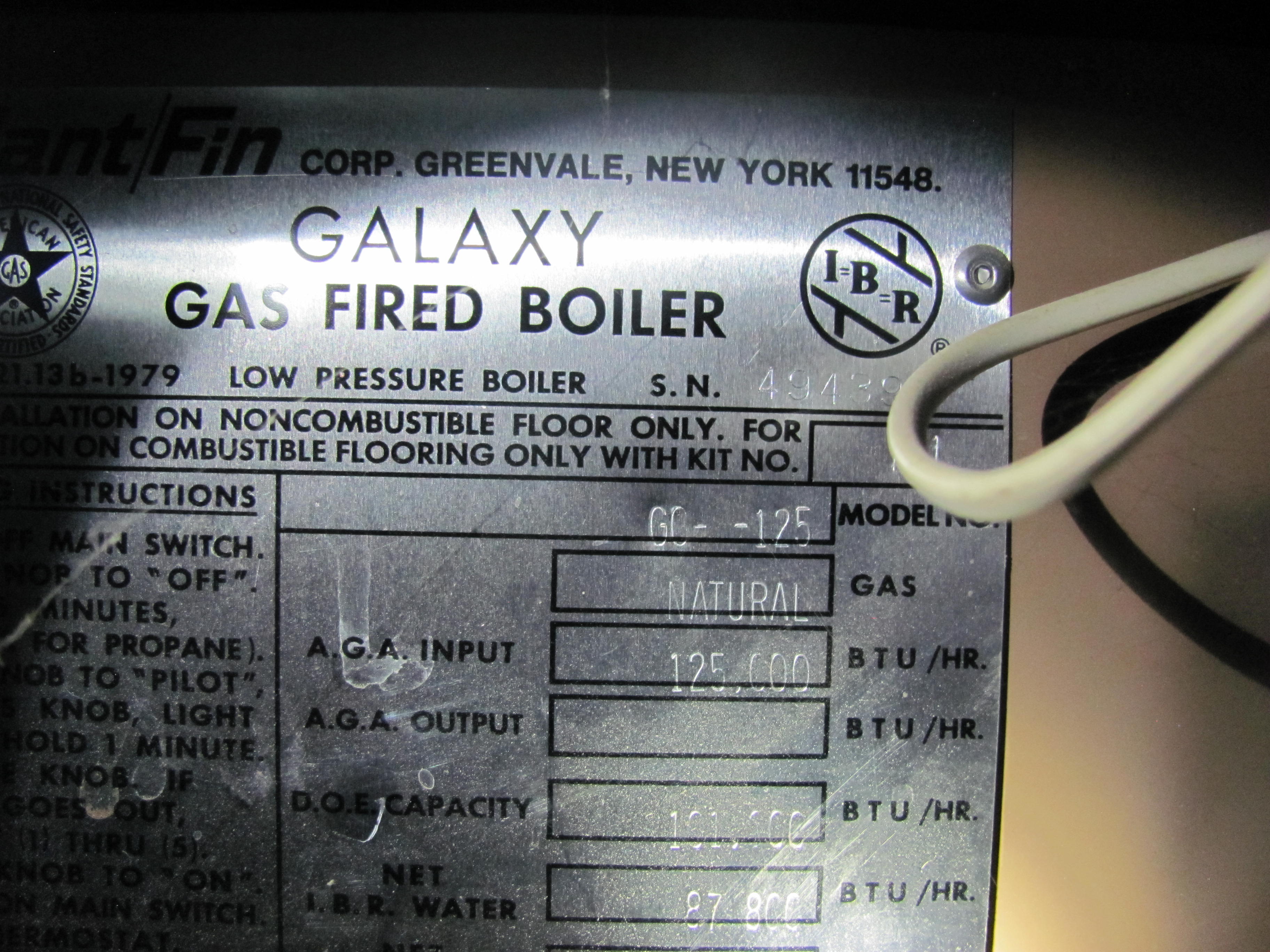This is a picture of a Rheem package unit. It has run very well for the last 12 years, save for a couple of weeks ago when the blower fan went out when it was about 6 degrees above zero. Fortunately it was very easy to access and replace, and has been running fine ever since.
I chose the article on Inspecting HVAC filters. One thing the article pointed out that I see on a regular basis is locating the filter in a difficult place to access. Most of the time I see them located in the ductwork next to a furnace located in a crawlspace. Like the article states, I advise my clients to consider register grill filters in the returns as not many folks are willing (and some are unable) to get into the crawlspace to inspect/change the filters.
This is the glow plug on a mid-efficient HVAC system. This device is energy efficient and does not waste gas like a standing pilot. When the HVAC system begins the ignition process to begin heating, the glow plug heats up and ignites the natural gas.
Picture shows crawl space of inspected unit. Vapor barrier in place, space is dry and well ventilated, no visual or smells of moisture. No evidence of moisture on any framing members. HVAC components are in good condition, no visible rust or corrosion.
The picture i chose was of installation of vinyl siding. It is important that the siding be installed to shed water and weather and to also let the surface behind breathe. Vinyl siding is subject to temperature changes and so it is important to install it in method that allows for expansion and contraction. Do not nail siding tight to the sheating, keep it loose and able to move.
I found a picture of a oil filter on a oil heating appliance and I learn u need to have one on the oil tank to trap all the sludge and water so it dosent plug the nozzle in the burner.
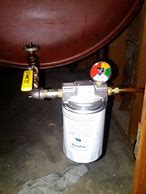
I found the picture for the clearance for a chimney the high should be 3 feet higher than the roof and 2 feet higher than the next structure in a 10 feet radius from the chimney to have a proper draft.
As usual, I am a very visual person so I chose an image from the gallery titled "Attic Furnace Inspection. The image was “Uploaded December 31, 1969”. The inspector in the photo was looking at an opened furnace panel and apparently inspecting the internal components. I know inspectors are only suppose to do a visual inspection, but it doesn’t hurt to do more if you’re comfortable and knowledgable.
What I believe to know about this HVAC System is that it appears to be a gas thermal, electric powered, forced air system. It uses a two fan system. One on the outdoor unit to force air in and through the system for heating and cooling, as well as a fan blower system in the unit in the room. This system is meant for small areas and/or single room only.
about to start the “how to inspect HVAC system course”
Lets talk about the Air filter and the return air plenum. These two things are very important to describe in your inspection report. By looking at the filter you can tell if someone takes care of there equipment or they neglect it. When i go on an inspection I try to look at the filter and the return plenum to see how dirty they are. It is very important for the efficiency of the equipment to stay clean. It also helps the maintain the life expectancy of the equipment.
The “Central Air-Conditioning System Inspection” article is full of great information that can be shared with a client during a home inspection. Cleaning and maintaining the condenser unit following the tips in this article are easy and not expensive, and can reduce the cost of repairs and energy bills!
I want to talk about advertising on your vehicle. I have learned some valuable information regarding displaying your signage on your vehicle. The things you don’t think about are simple things ,like you vehicle being clean and tidy before your inspection , try to cover all sides of your vehicle with advertising and keep the wording simple less is more. And always drive as if a cop were driving behind you that is the best advise i can give. A first impression is worth its weight and gold.
Hot water heater
This photo is of a John Wood domestic hot water heater.
The fuel source is natural gas.
The year according to building center is 2002.
The water shut off is located just above the unit.
The pressure releif valve is present but a pipe should be fitted to extend it closer to the floor to avoid a burn hazard.
This unit is passed its service life.
It appears to be a mid efficiency as it has a flue that enters the chimney.
In the article “IR camera’s: Inspecting for Moisture Intrusion” it points out all the valuable ways that the camera can be used. It can be used on exterior walls to look for moisture absorption, or on the interior it can be used to find water damage in walls or floors attributed to broken pipes or leaking toilets or dishwashers or any house hold item that has water involved.
Pilot lights-
Older models of appliances use a standing flame pilot light which is continuously lit. This can be a safety concern if the light blows out and the gas, for whatever reason, continues to run. This could lead to an accumulation of gas that could cause a fire or explosion if a source of ignition is introduced in the area.
Sensors such as photo-resistors, thermometers and volt meter can be installed to deduce whether a flame is present or not and shut off the gas.
Standing flames pilot lights also lower the efficiency of the appliance.
Here you see a gas meter, the device that measures the amount of gas that is supplied into a building. This meter is on the outside of the home and is up against the exterior siding, protected by the roof overhangs. In this picture, you can also the the main valve, the regulator, and the supply line going into the home. Having the meter on the outside of the home also makes it easily accessible for the gas company to preform maintenance.
Gas fired hot water boiler showing a picture of the information plate attached to the boiler. It shows that the input capacity of 125,000 BTU and the output is 87,800 BTU which would give this boiler a 70.24 percent efficiency rating. And that is was built on or after 1979.
After reading the article “Homeowner Maintenance: Changing the HVAC Filter” it gives detailed information about the maintenance of the HVAC filter and the frequency it which the filter should be changed based on use and living conditions of the occupants of the home. During my inspections, if there is a forced-air HVAC system, I always include advice about filter maintenance and furnace maintenance in my inspection report.
Composting toilets do not require any water or sewage assistance. The waste is decomposed by microbial activity which kills off harmful pathogens, unlike pit toilets. This means no septic and plumbing installation costs for the home owner and massive savings on the water bill. The end, decomposed product is safe and easy to handle. Organic kitchen waste can also be added to this compost, if the home owner desires.
